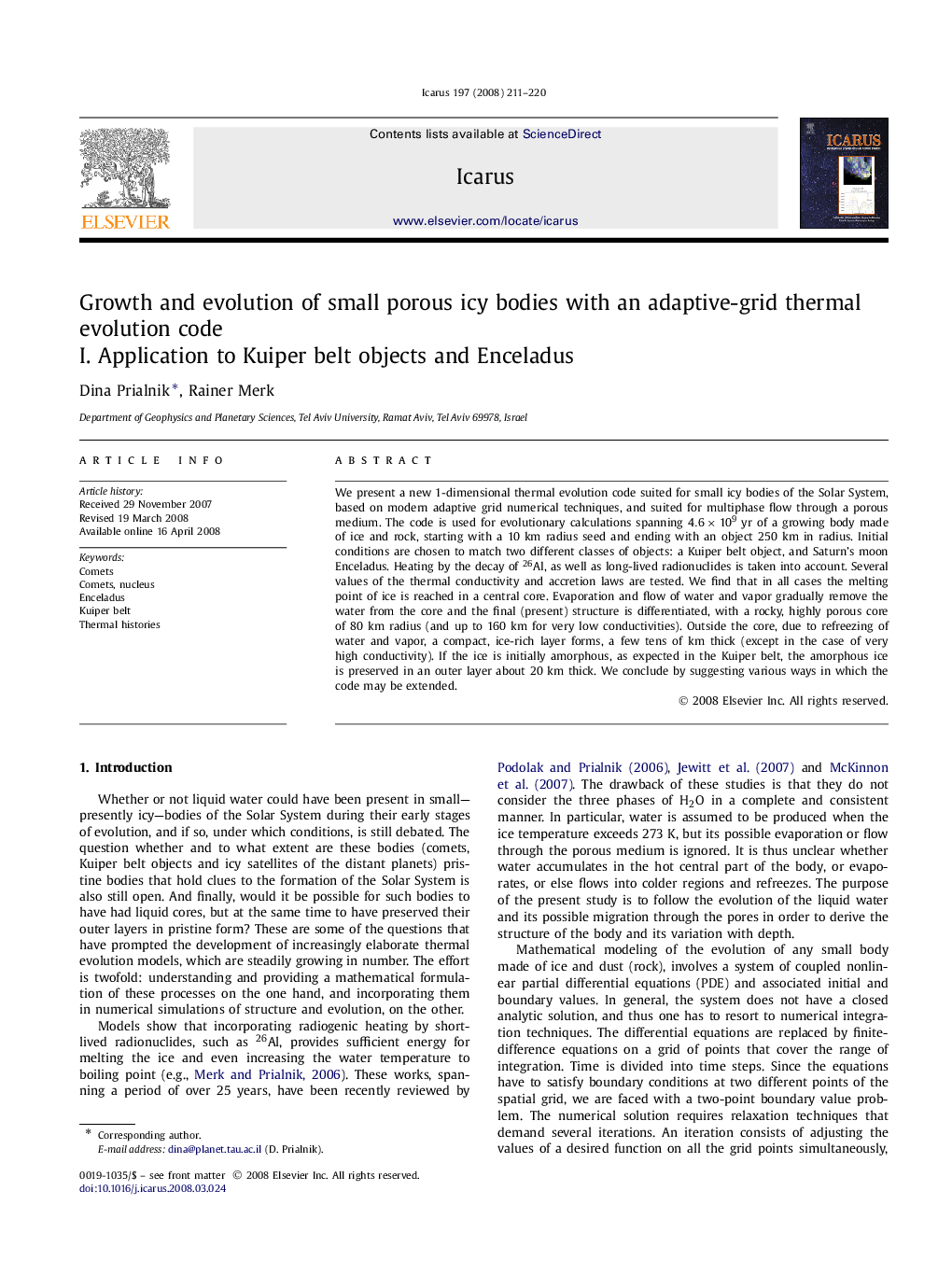| کد مقاله | کد نشریه | سال انتشار | مقاله انگلیسی | نسخه تمام متن |
|---|---|---|---|---|
| 1775009 | 1021181 | 2008 | 10 صفحه PDF | دانلود رایگان |

We present a new 1-dimensional thermal evolution code suited for small icy bodies of the Solar System, based on modern adaptive grid numerical techniques, and suited for multiphase flow through a porous medium. The code is used for evolutionary calculations spanning 4.6×109 yr4.6×109 yr of a growing body made of ice and rock, starting with a 10 km radius seed and ending with an object 250 km in radius. Initial conditions are chosen to match two different classes of objects: a Kuiper belt object, and Saturn's moon Enceladus. Heating by the decay of 26Al, as well as long-lived radionuclides is taken into account. Several values of the thermal conductivity and accretion laws are tested. We find that in all cases the melting point of ice is reached in a central core. Evaporation and flow of water and vapor gradually remove the water from the core and the final (present) structure is differentiated, with a rocky, highly porous core of 80 km radius (and up to 160 km for very low conductivities). Outside the core, due to refreezing of water and vapor, a compact, ice-rich layer forms, a few tens of km thick (except in the case of very high conductivity). If the ice is initially amorphous, as expected in the Kuiper belt, the amorphous ice is preserved in an outer layer about 20 km thick. We conclude by suggesting various ways in which the code may be extended.
Journal: Icarus - Volume 197, Issue 1, September 2008, Pages 211–220